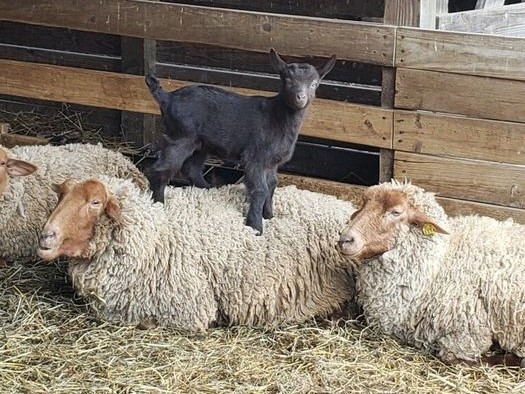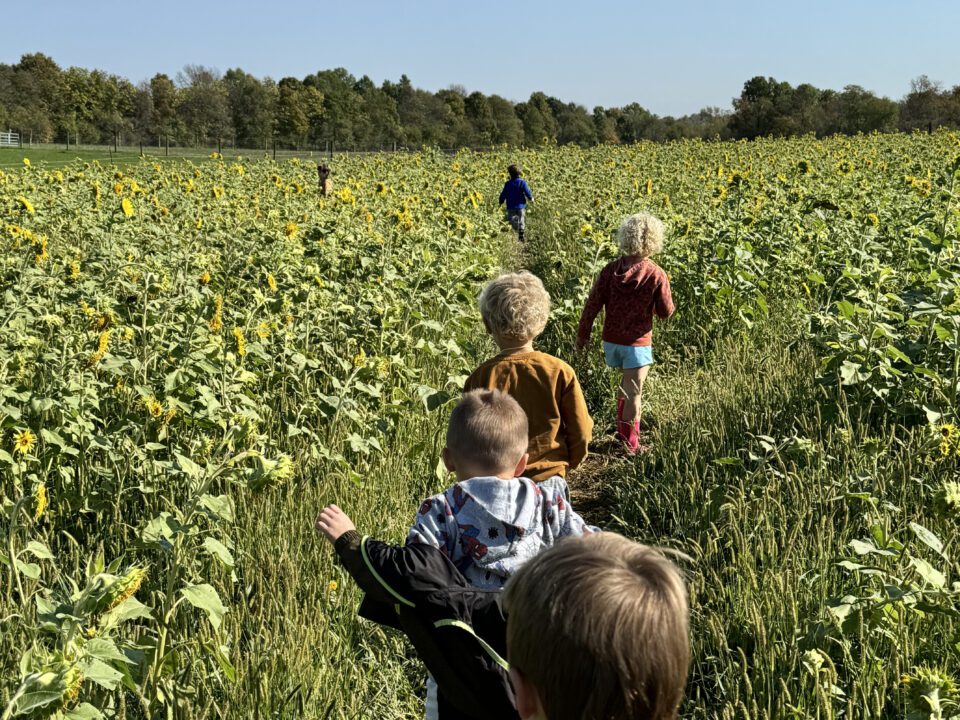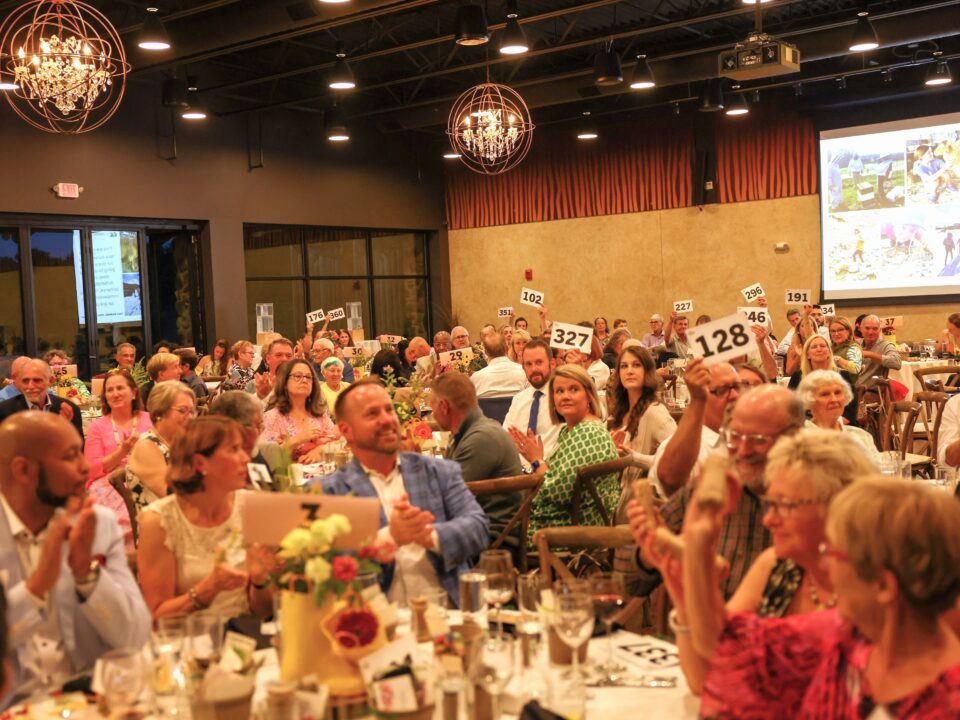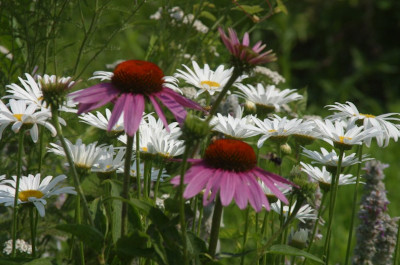
Spring Blooms Color the Nature Preserve at Stratford Center
April 15, 2017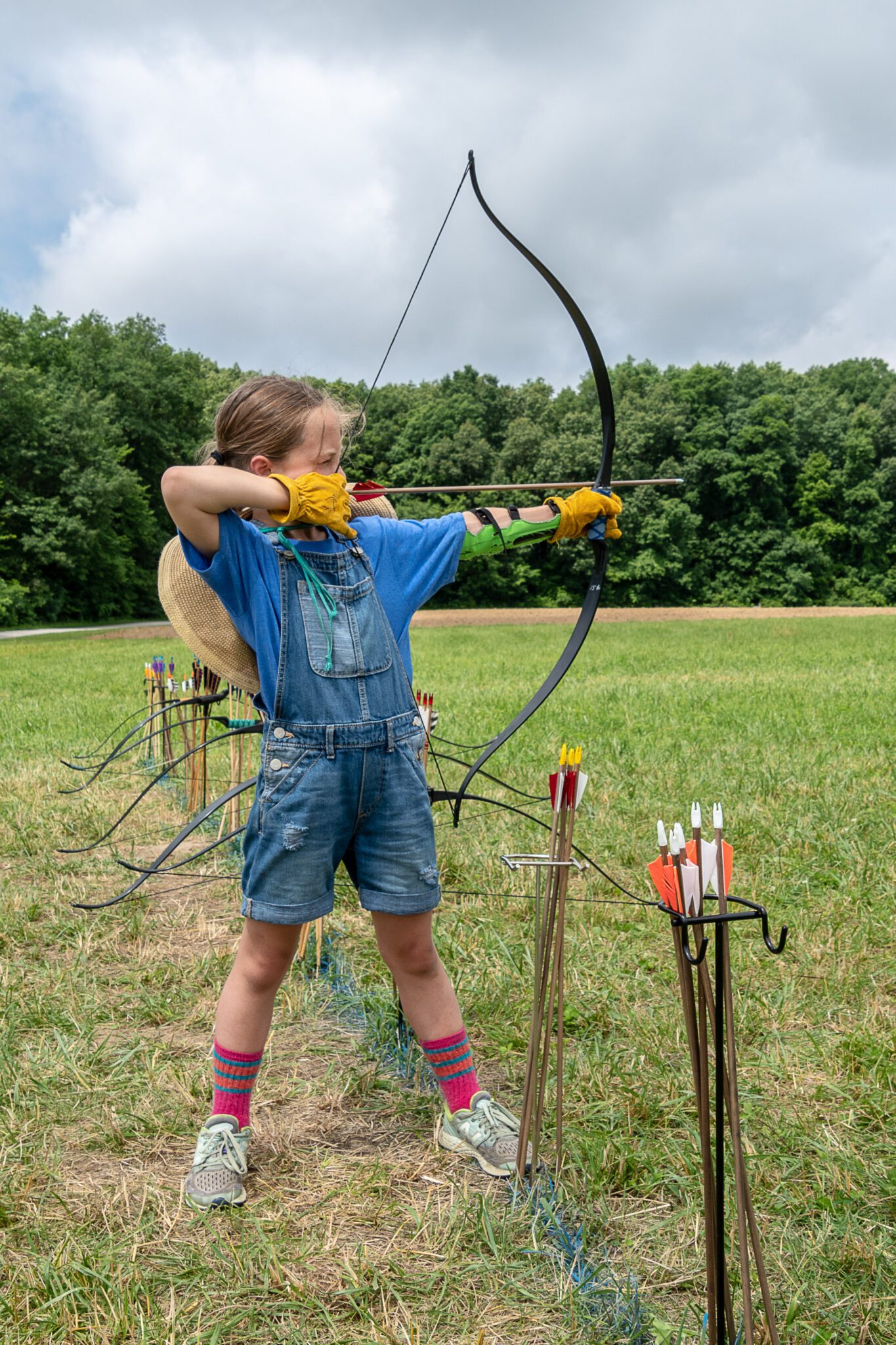
Stratford Introduces Archery to Boost Campers’ Self Esteem
June 17, 2017Published in The Delaware Gazette: May 20, 2017
It seems to me we have been in the throes of summer longer than the actual date on the calendar, and it is disorientating me! The temperatures at Stratford Ecological Center on Liberty Road during the last half of April, were well over the historic average. The highs did drop in the early part of May, with the lows about average, except for four nights when frost was possible. We did not experience any noticeable damage, although it caused grass growth to slow resulting in feeding more hay.
It has definitely been HOT and above average this past week with temps in the high 80’s. Generally, the early warmth has been lovely, especially when accompanied by cooling winds, low humidity, and the intoxicating spring foliage. But when it comes to anything strenuous, like serious weeding by a body not yet in “heat mode,” the hot sun brings about a desire to just sit and stare, without a thought for the need to prepare ground to plant the summer harvest!
The first “Sheep Shearing” event on Sunday May 6, attracted over six hundred adults and children, and proved as popular as our September Harvest Fair. Families arrived before 11 am. and filled the parking spaces along the lane, spilling over into the dubiously dry North Pasture. No one had to be pulled out! There were plenty of activities connected with wool, a continuous demonstration of shearing in a mobile facility next to the barn, and of course hayrides. It was so cute observing children sitting on tiny benches learning to knit with yarn from an angora rabbit, making bath sponges out of bar soap and soaked sheep wool, or decorating cookies in the shape of sheep, cows and llamas, when their moms were not elbowing in.
However, kids on a farm, or in a vegetable garden, don’t really need our help to keep occupied. They found the pile of soil, and filled miniature wheelbarrows to push and deposit the rich content on the beds. They fed the chickens, collected and washed eggs, checked out the animals and cats in the barn, watched the sheepdog nose three ducks through an obstacle course, showed off their prowess with an old‐fashioned hula hoop, and cried when it was time to leave.
Two bags of wool fleeces were laid out on tables in half of the big room in the education building. It made it easy to skirt or cut away the dirty wool prior to scouring or washing, carding or combing, and finally spinning. Windows were opened, and fans turned on to help in the drying process. Despite having brought the sheep into the barn the night before, their fleeces were still damp when sheared. The dampness, and the unusual distribution of lanolin in the fleece, due to fluctuating winter temperatures, made them harder to shear. Our grateful thanks are extended to Bob Taylor, our sheep shearer from Somerset, Ohio, for his perseverance.
The grass has been long enough to cut and make hay since the beginning of April, but it takes three or four days of weather in the 70’s and 80’s to dry it after cutting. Less than that, it is like trying to make hay in September when it never quite stays warm enough. The spring crops are in the ground. Farmer Jeff planted oats with alfalfa and orchard grass for a summer hay crop in part of fields 3 and 5. The buckwheat seed in field 3 is sprouting, and more will be sown to extend the flowering season, and provide nectar for our bees.
This year’s crop of young livestock included 19 lambs, 11 kids and 3 calves. Sadly, a coyote took advantage of a lightning strike taking out our electric fence, and he entered the field during the night. The coyote attacked a ram lamb who succumbed. The partly eaten carcass was found the next morning, and now the big question is where were our llamas Rafiki and Lightning? They are normally so vigilant, turning their head at any new sound, and placing themselves between any coyotes and the animals.
The one remaining animal to give birth is Donna our gilt pig. Donna was born to Bella on St. Patrick’s Day last year. The girls were joined by a boar last January. They were separated from him in April as they looked ready to give birth. Since then Bella came into heat, and was returned to the boar. Donna is expected to farrow imminently, and we plan to keep and fatten four of her piglets. The others will be looking for homes, very likely for 4H projects.
Our Education Interns, along with visiting school children, have planted 6‐inch tomato plants in cottage cheese containers to donate to PIN. In the past, they have put the plants in a container, big enough for them to grow during the summer and produce fruit. The idea of the cheese containers is that recipients will need to transplant the seedling into their garden, and learn how to grow it. They have been well received. This month, in addition to the tomatoes, we will share flowers, peppers, and squash.
Late May marks the end of the farm and nature tours and the Messages from the Earth program until Fall. This does not mean there is nothing going on! Our summer camps are all full, monthly story time continues, as does Book Talks, the herbal study group, and the photography club. A Meet the Bees class will be offered June 10, July 22, and August 19 from 10‐11:30 am. for a fee of $10/person. A new Photography Workshop for Kids is planned for June 13 from 10‐12 noon for ages 6‐17 at a cost of $5/person.
We will soon be saying goodbye to our Volunteer Coordinator, Jane Walsh. Jane is retiring after twelve years, and hopes to finally accomplish some things on her bucket list. She has encouraged many people to experience Stratford, and find their own niche as a volunteer. The Stratford family will share their appreciation of all her efforts at two potlucks beside the pond next week. We thank you Jane!
Pauline Scott is a farm and nature guide at Stratford Ecological Center, 3083 Liberty Road, Delaware, Ohio, 43015, Tel. 740 363 2548. Email StratfordCenter@aol.com or visit our web site at StratfordEcologicalCenter.org


